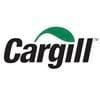Introduction
The production of microbial protein is characterized by rapid cell growth, the possibility of obtaining it in various substrates and high rates of production, based on the area where it is produced (Maia et al., 2001). Cuba has developed a technology for the production of torula yeast using the vinasse from distilleries as a base substrate, which makes it possible to reduce the organic load of this residue and at the same time, to secure this protein source (Otero et al., 2007). Precisely the substrate to be used is considered the most determining factor in the variation of the chemical composition of yeasts (Álvarez & Valdivié 1980).
The objective of this study was to determine the apparent metabolizable energy (AME) and the AME corrected for nitrogen balance (EMAn), as well as the digestibility of nutrients (MS, PB and Pt) of the torula yeast developed out of vinasse from alcohol distilleries in broiler chickens.
Materials & Methods
It order to determine the apparent metabolizable energy (AME) and the metabolizable energy corrected by nitrogen balance (AMEn), the traditional method of total excreta collection (Albino et al., 1992) was used in broilers of 21 to 30 days of age. The birds were bred in metal drums and received formulated initial ration as described by Rostagno et al. (2005) up to 21 days of age. They were subsequently transferred to the metabolism room during the period from 21 to 29 days; 100 Cobb-500 male chickens were used, with an average weight of 663 g, randomly distributed in two treatments and five repetitions, with ten birds per experimental unit. The treatments consisted of a control diet and a diet in which 20% of the macronutrients were substituted of the control diet by torula yeast obtained from vinasse, according to the methodology proposed by Rostagno et al. (2007).
The experimental period lasted 9 days, five days of adaptation and four days the total excreta collection. The birds received water and food ad libitum and 24-hour lighting. The composition and the contribution of the control diet used (table 1) was formulated as per recommendations made by Rostagno et al. (2005). The average temperature recorded during the experimental period was 260C and the average humidity was 60%.
Food consumption was controlled on a daily basis and excreta collection was carried out twice a day (every 12 hours) to avoid fermentation. The excreta were collected in trays covered with nylon and stored in a freezer (- 100C), in previously identified bags, until the end of the collection period. At the end of the experiment, the total amount of food consumed was determined by repetition. The excreta were thawed, weighed and homogenized, so as to withdraw aliquots (100 g), which were dried in forced oven ventilation at 600C for 72 hours. Subsequently, the samples were ground with 1 mm screens, for analysis and determination of DM and nitrogen in rations and excreta, according to the techniques described by Silva (1990). The gross energy of rations and excreta was determined using an adiabatic calorimetric bomb.
The calculated variables were: apparent metabolizable energy (AME), apparent metabolizable energy corrected for nitrogen balance (AMEn), DM digestibility coefficient (DMDC), apparent phosphorus digestibility (APD), apparent PB digestibility (APBD) and apparent nitrogen retention based on the formulas proposed by Matterson et al. (1965)
Data were analyzed using descriptive statistics; the average (X), the standard deviation (SD) and the variation coefficient (VC) were determined through the use of the INFOSTAT (2001) program, version 1.
Results and Discussion
The average values of apparent metabolizable energy (EMA) and AME corrected for nitrogen balance (AMEn), as well as the respective coefficients of energy metabolization (EMR), are presented in Table 3.
Table 3. Metabolizable energy values (AME and AMEn) and energy metabolization coefficient (EMR) of torula yeast obtained from vinasse
The BE reached values similar to those reported by Longo et al. (2005) to evaluate alternative protein ingredients for fattening broilers, including dry yeast.
The AME of torula yeast obtained from vinasse had an average value of 2811 kcal/kg of DM, higher than the value reported in Feedstuffs (2010) for torula yeast (2160 kcal/kg) and soy flour (2240 kcal/kg, 44% PB). However, this value may vary by many factors such as the substrate where the yeast grows, the method used to determine the AME, the age of the birds, etc. In this regard, Valdivié (1976) did not any find differences in ME in diets with 0, 10, 20 and 30 % of honey torula yeast, suggested that, from the energy point of view, the use of torula yeast does not affect the nutritional behavior of birds.
AME was 16% higher than AMEn, which is normal when ME values are determined with birds in growth according to Nery et al. (2007) and this is because at this stage greater nitrogen retention for protein tissue deposition occurs, which is more pronounced when correction is done by endogenous and metabolic losses. Leeson & Summers (2001) and Nunes (2003) raised the need to correct the estimated energy values by nitrogen balance, since during metabolism trials it is impossible to ensure that all the birds show the same rate of growth. According to Leeson & Summers (2001) ME values, when corrected by nitrogen balance, always tend to be lower when the birds show a positive nitrogen balance, i.e. no loss of weight or muscle tissue degradation ocurred, which explains the lower values for AMEn found in this work.
MEC for torula yeast obtained from vinasse (58%) is low when compared with corn ( 85 %), as reported by Vieira et al. (2007) and indicates that yeast does not have a composition that promotes the use of energy in birds. Similarly, Longo et al. (2005), while evaluating different sources of protein in the pre-initial phase (1-7 days of age) for fattening broilers, found an MER of 49.97% for the Saccharomyces ssp yeast. Similar values were reported by Nunes (2003) while evaluating meat and bone meal (51.1%), flour obtained from feathers (55.49%) and hatching waste flour (60.09%), associating these values to the mean geometric diameter, BP, EE and the mineral content in these foods.
Apparent digestibility of nutrients is presented in table 4. The DDMC was 7% lower than that reported by Tillán (1983) when evaluating the honey torula yeast for fattening broilers. Also, Alvarez & Valdivié (1980) observed a notable decrease in the apparent retention of dry matter (ADMR) and nitrogen (ANR) from 20% for the inclusion of honey torula yeast. However, the 65.85% of APDB is consistent with that reported by Buxadé (1996) for the by-products of distilleries (60%) and Álvarez et al. (1981), who found a digestibility of nitrogen for torula yeast from 55 to 70%, depending on the type of industrial processing.
Table 4. Apparent digestibility of nutrients in torula yeast obtained from vinasse (% on wet basis)
Taking into account the phosphorus richness found in yeast, it is important to know how much of this phosphorus is available to animals. This work found a APD of 63.46%, higher than the availability of phosphorus in corn (28%) and 40% in the soybean flour (44 % protein), as reported by Kornegay (2001). The inclusion of torula yeast obtained from vinasse in corn-soy diets would enable a better balance of the phosphorus available, thus reducing the excretion of this nutrient into the environment.
Conclusions
It is concluded that torula yeast made from vinasse presented an apparent metabolizable energy (2811 kcal/kg DM) and corrected by nitrogen balance (2362 kcal/kg DM), higher than soy flour and the digestibility of nutrients, amounting to 65%, indicates that its use as a protein source in poultry diets, must be combined with other sources of greater digestibility and nutritional value, enabling a better nutrient balance and assimilation by birds.
Bibliography
Albino LFT, Rostagno HS, Tafuri ML.1992. Utilização de diferentes sistemas de avaliação energética de alimentos na formulação de rações para frangos de corte. Revista da Sociedade Brasileira de Zootecnia 21:1037-1044.
A.O.A.C. 1995. Official methods of analysis (16th Ed.). Association of Oficial Analytical Chemists, Arlington, VA.
Álvarez RJ & Valdivié M. 1980. Energía metabolizable y retención de nitrógeno en dietas con levadura torula para pollos de engorde. Rev. Cubana Cienc. Agríc. 14:55-61.
Álvarez RJ, Cabello A, Otero M. 1981. Una nota sobre el valor biológico y digestibilidad de la levadura torula cubana secada por diferentes métodos. Rev. Cubana cienc. Agríc. 15:71-82.
Buxadé C. 1996. Zootecnia: bases de producción animal. Vol. 5. Avicultura clásica y complementaria. URL:http://www.articulos.levillage.org/?p=23. Acceso: Enero 2010.
Feedstuffs Reference Issue & Buyers Guide. 2010. 80(38):16.
INFOSTAT. 2001. Balzarini GM, Casanoves F, Di Rienzo IA, González LA, Robledo CW. Software estadístico. Manual de usuario. Versión 1. Córdoba, Argentina.
Kornegay ET. 2001. Digestion of phosphorus and other nutrients: the role of phytases and factors influencing their activity. pp:237-271. En: Bedford MR & Partrige GG (ed.). Enzymes in farm Animal Nutrition. CABI Publishing, New York.
Leeson S & Summers JD. 2001. Nutrition of the chicken. 4. ed. Guelph: University Books. 591p.
Longo FA, Menten JFM, Pedroso AA, Figueiredo AN, Racanicci AMC, Gaiotto JB, Sorbara JOB. 2005. Diferentes fonts de protein na dieta pré-inicial de frangos de corte. Rev. Bras. Zootec. 34:121.
Maia GAR, Fonseca JB, Soares RTRN, Silva MA, Souza CLM. 2001. Desempenho de Poedeiras Comerciais Alimentadas com Levedura Seca (Saccharomyces Crevisiae) de Cana-de-Açúcar. Rev. Bras. Cienc. Avic. 3(2):315-327.
Matterson LD, Potter LM, Singsen EP. 1965. The metabolizable energy of feed ingredients for chickens. Research Report 7:3.
Nery LR, Albino LFT, Rostagno HS, Campos AMA, Silva CR. 2007. Valores de energia metabolizável de alimentos determinados com frangos de corte. Rev. Bras. Zootec. 36: 1354.
Nunes RV. 2003. Digestibilidade de nutrientes e valores energéticos de alguns alimentos para aves. Viçosa, MG: Universidade Federal de Viçosa, 113p. Tese (Doutorado em Zootecnia).
Otero MA, Saura G, Martínez JA, Almazán OA. 2007. Fodder yeast production: a new approach for distillery vinasses treatment. Proc. Int. Soc. Sugar Cane Technol. 26:1127.
Rostagno HS, Albino LFT, Donzele JL, Gomes PC, de Oliveira RF, Lopes DC, Ferreira AS, Barreto TSL. 2005. Tabelas brasileiras para aves e suínos: composição de alimentos e exigências nutricionais. 2.ed. Viçosa, MG: Universidade Federal de Viçosa. 186p.
Rostagno HS, Bünzen S, Sakomura NK, Albino LFT. 2007. Avanços metodológicos na avaliação de alimentos e de exigências nutricionais para aves e suínos. Rev. Bras.Zootec. Suplemento Especial. 36:295-307.
Silva DJ. 1990. Análise de alimentos: métodos químicos e biológicos. 2.ed. Viçosa, MG: Universidade Federal de Viçosa. 165p.
Tillán J. 1983. Algunos indicadores bioquímicos-fisiológicos que afectan la utilización del nitrógeno en aves alimentadas con levadura torula. Tesis en opción al grado científico de Candidato a Doctor en Ciencias. ICA. Cuba.
Valdivié M. 1976. Utilización de la levadura torula, harina de colza y harina de girasol en las dietas para pollos de engorde. Tesis en opción al grado científico de Candidato a Doctor en Ciencias. ICA. Cuba.
Vieira RO, Rodrigues PB, Feitas RTF, do Nacimento GAJ, da Silva EL, Hespanhol R. 2007. Composição química e energia metabolizável de híbridos de milho para frangos de corte. Rev. Bras. Zootec. 36:832-840.













